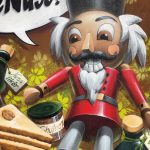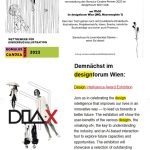


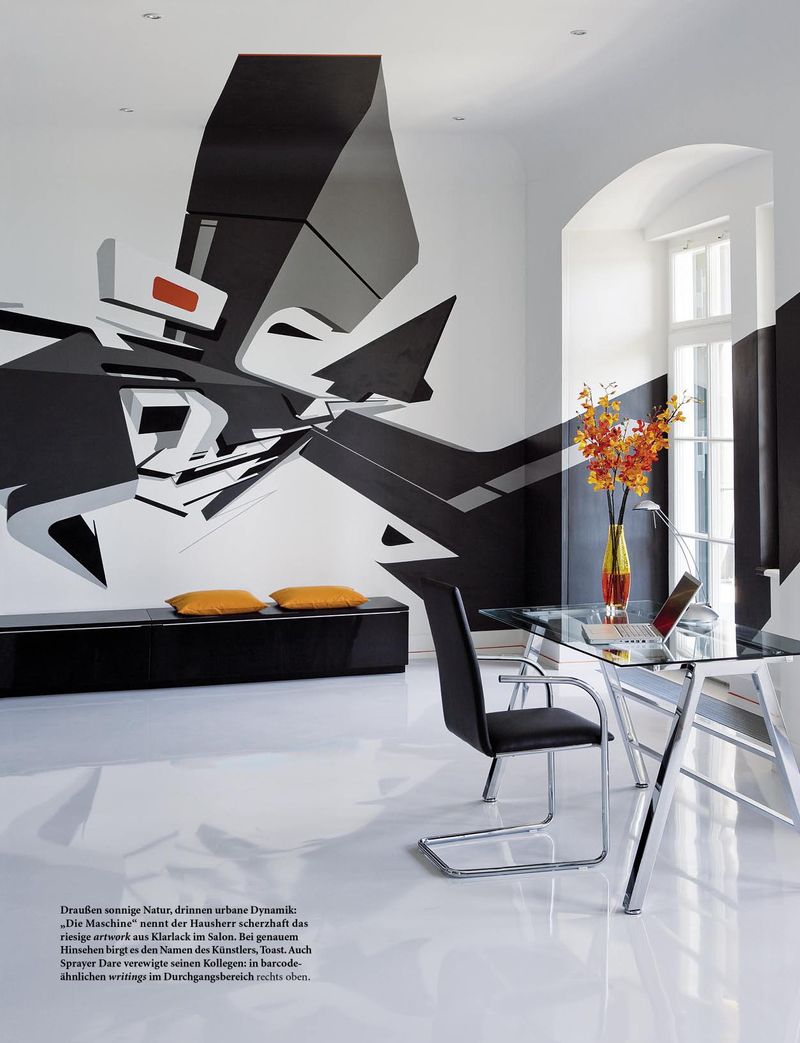
Ata Bozaci
“I consider graffiti to be an art form.”
Artist & Graphic Designer
In conversation with dimitria.eth
04.09.2023
Ata Bozaci, Point of view (2007). Collaboration with Dare Sigi von Koeding. Privat apartment Gunter Sachs Schlosshotel am Wörthersee, Velden. Featured on Architectural Digest (AD). Photos: © Estate Gunter Sachs
Get know Ata Bozaci
have a look #artnoi
Ata Bozaci at Zurich Art Weekend (Art Basel)
Ata had an exhibition opening for his new abstract and geometric artworks in Zurich, and I was able to arrange a studio visit with his wife and studio manager. Two intensive studio visits followed.
Dimitria: You have been spraying actively since the early 90s in Switzerland / pseudonym “TOAST”. How did your interest start and how was the graffiti scene in Switzerland at that time? What led you to choose the alias TOAST?
Ata Bozaci: My interest in graffiti began on my way to school from Burgdorf to Bern. Previously, I had seen sprayed images in skateboard magazines, but I had no idea what it was about. Most of those who spray have a common inspiration from the movie “WildStyle.” For me, it was skateboarding and the Bernese railway line. There were already occasional pictures by CMC-Crew members like Sun2, Kiwi, Zerox etc., and I marvelled at the precise execution of theses images. At that time, there wasn’t a wide selection of cans and nozzles. This made the medium even more fascinating to me. I started becoming active during my graphic design studies when I had the chance to get to know an already established graffiti artist (TWICE). He told me the history and explained the rules associated with it.
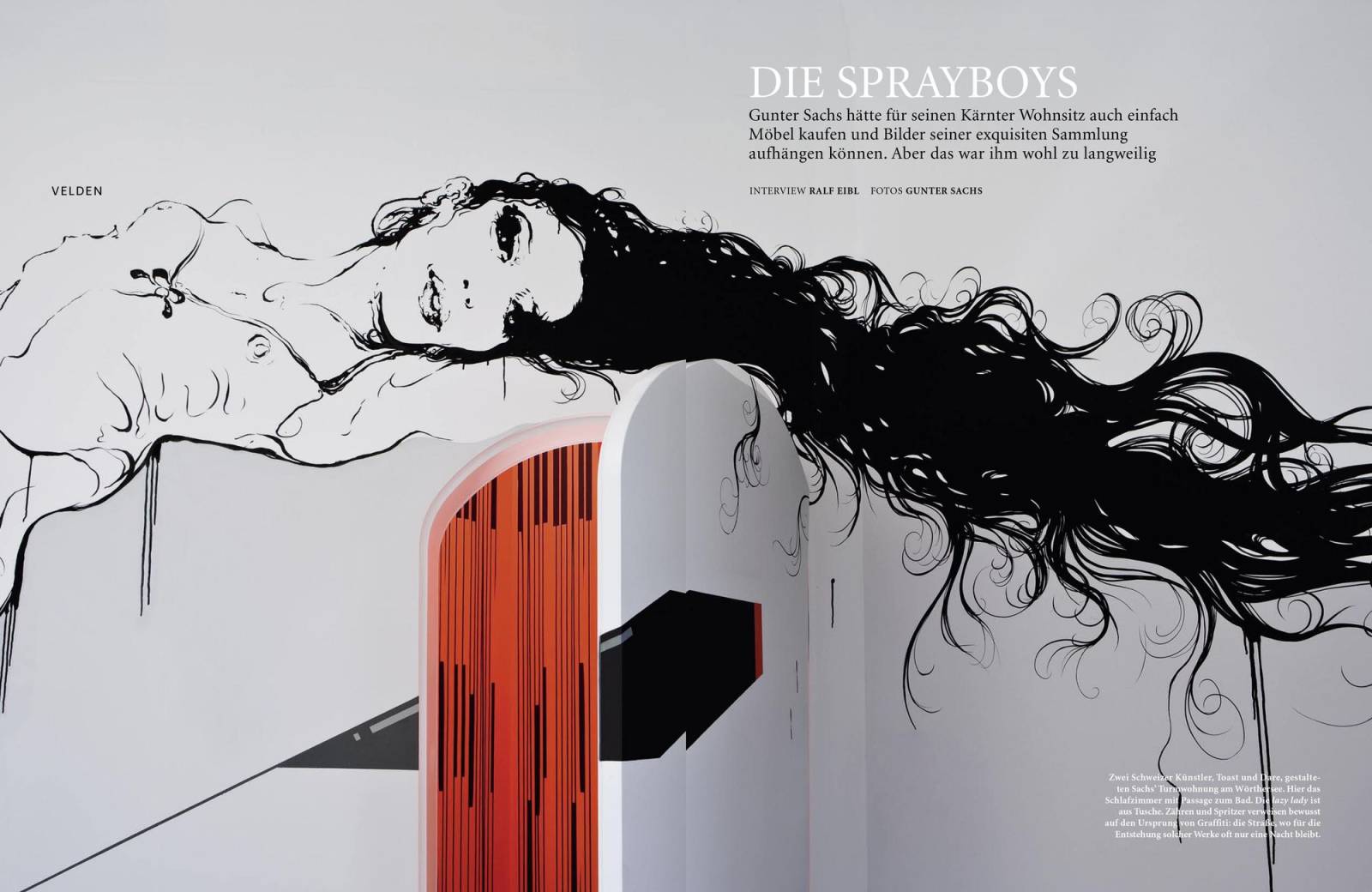
Ata Bozaci, Point of view (2007). Collaboration with Dare Sigi von Koeding. Privat apartment Gunter Sachs Schlosshotel am Wörthersee, Velden. Featured on Architectural Digest (AD). Photos: © Estate Gunter Sachs
After I had sprayed various names, I came up with this name TOAST. It suited me because I’m the middle of three boys, „a sandwich child“. Symmetry also played a role in our selection. Although I changed my pseudonym a few times after that, this name stuck.
D: What is your „one rule that you live by in your artistic practice?“
A: DO.
D: For your graduation work from the Design School in Bern you created the first-ever sprayed comic. Can you elaborate on the idea behind this project and the feedback from your teachers and colleagues? Do you still have it?
A: The sprayed image was part of my thesis. I was able to spray a long gymnasium wall in Burgdorf. I sprayed individual pages, photographed them, and then packed them into a small “Leporello” book. This didn’t go over well at all. Most of the teachers couldn’t stand me anyway. During my studies, I was put in detention twice. My unconventional way probably frightened most of them, and they couldn’t make sense of graffiti at all. I was very surprised by their aversion, as I consider graffiti to be an art form. Four years later, my wife was presented with my thesis as an exemplary example during her graphic design training. Isn’t that quirky 🙂. One copy should be lying around somewhere.
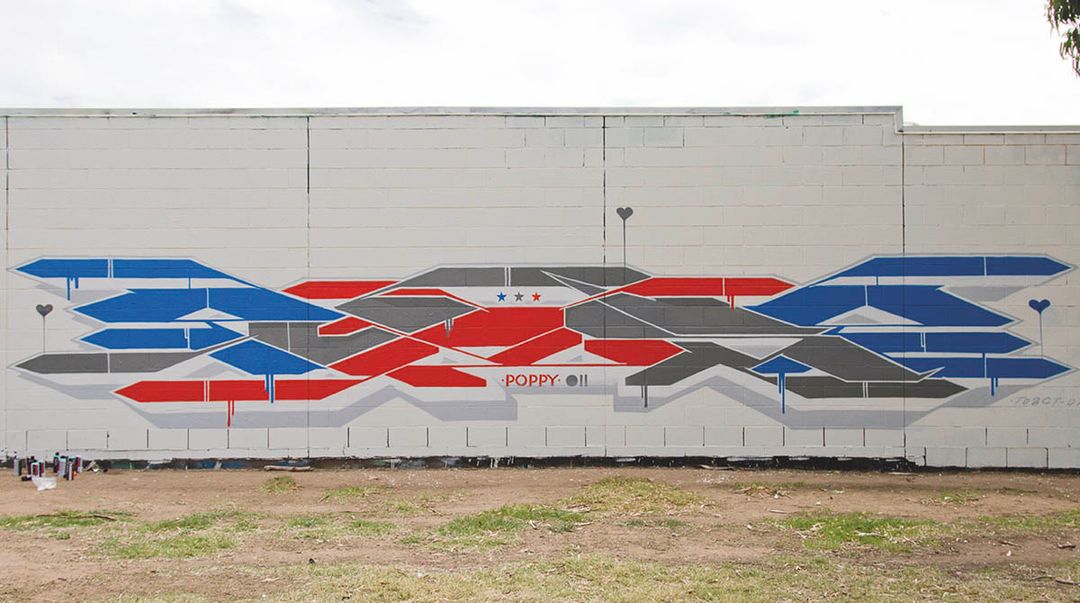
Ata Bozaci, Poppy (Adelaide), 2011. Photo: © Joel Van Moore / Vans The Omega
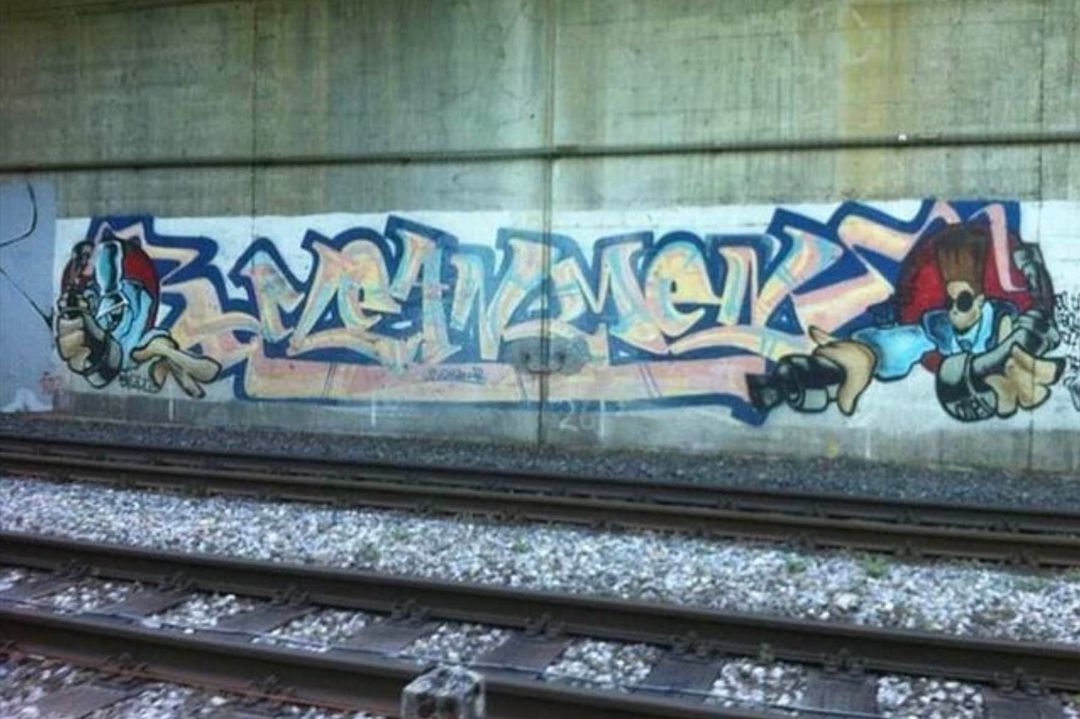
CLEANMEN by Zerox & Stero CMC, around 1986
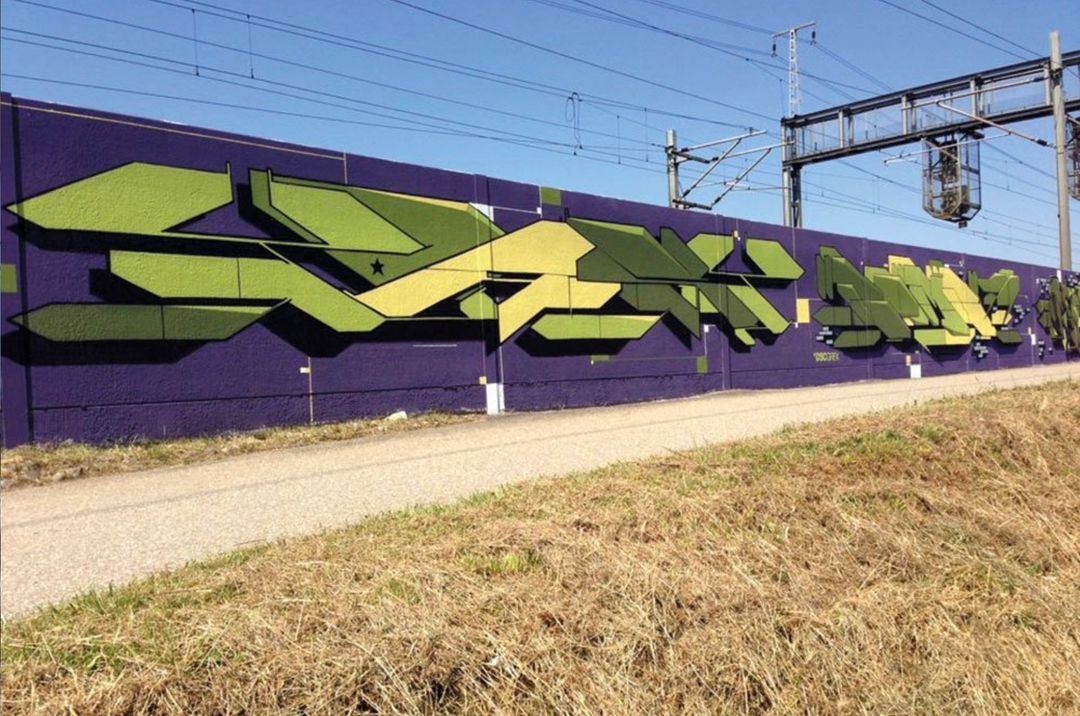
Ata Bozaci, Toast (Rubigen), 2013
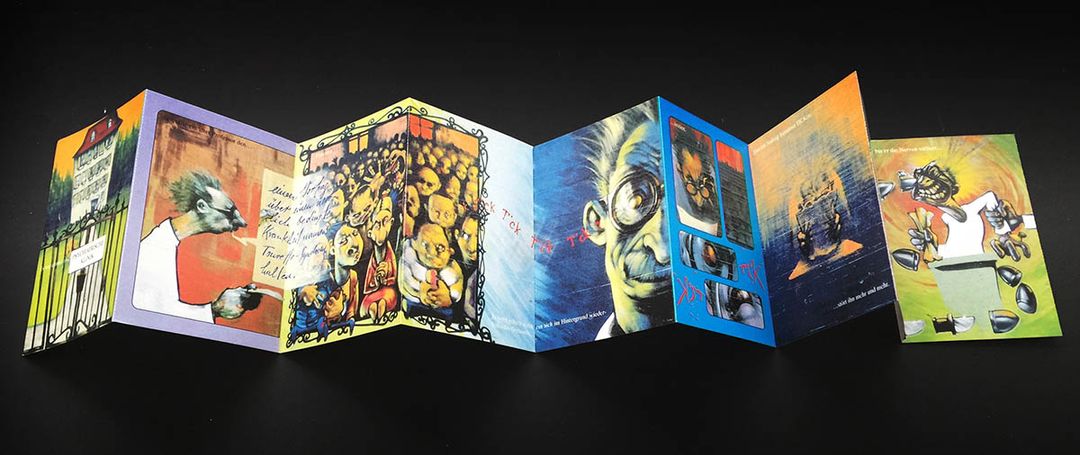
Ata Bozaci, Tick, Leporello 1996 (PDF here)
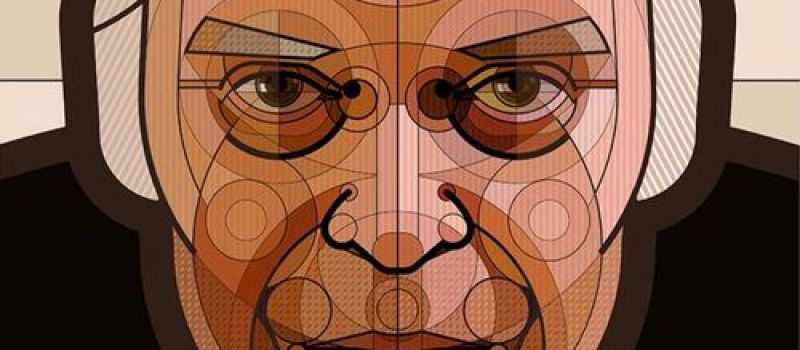
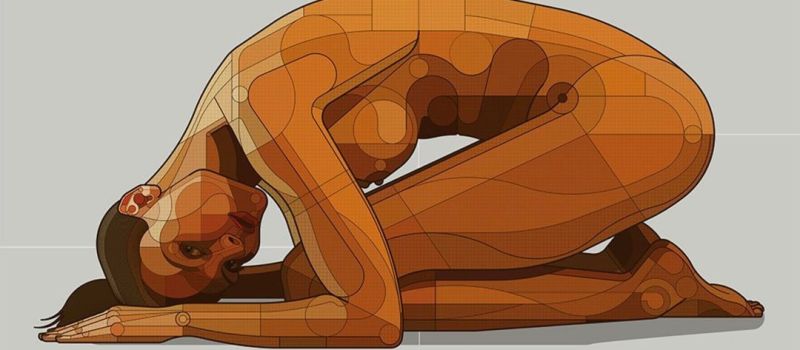
Ata Bozaci, Alexandra (from “Living in a box series”), 2017
Gubelmann family collection
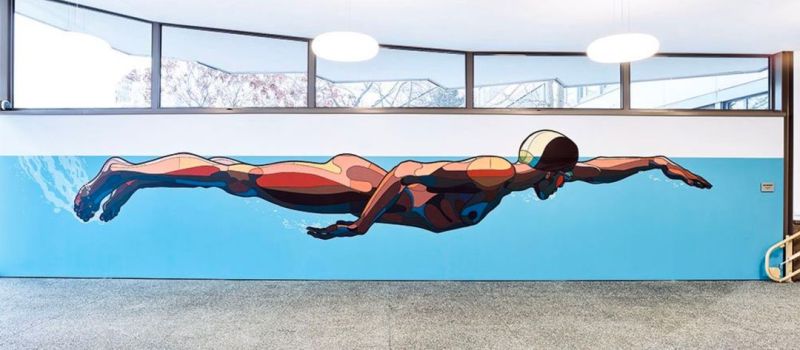
Ata Bozaci, Immersion
(at the Berufsbildungszentrum IDM Thun), 2018
Photo:© Manuel Stettler
D: In 1992, you joined HR Giger at Art Frankfurt group exhibition. How did your pairing of works come together with HR Giger, and how was your experience from that exhibition?
A: I unfortunately can’t remember names of organisations that had initiated this group exhibition. I was able to display four sprayed portrait works, right next to my great idol HR Giger. His works appeared to me so uncompromisingly dark, which I liked very much. I was around seventeen at that time, and my awe was so immense that I held back and only shook his hand briefly. We then exchanged a sentence or two about spray techniques. That’s it.
D: People play a central role in your works. Could you discuss the themes and ideas you explore through these works?
A: One of my great passions is observing. I have been studying people as well as nature and technology since my childhood. An anatomy of a human is very complex, which is why delving into it is always intriguing for me. During my studies, I primarily drew nudes. Capturing the essence of a person with just a few lines and giving them a maximum expression as a significant goal I pursue.
My visual language I have developed over the years is based on reduction. For instance, the portraits for the exhibition theme “Fifteen seconds of fame” were practically conceived using only circles and lines. This led me to discover that all faces can be broken down into a recipe of circles.
Interpersonal relationships and navigating new media have long been prominent themes in my work. Our series “Living in a box” also explores space and people.
D: Could you share more about your experience establishing „Atalier“ Visual Entertainment and your involvement in online game commissions? What were some of the highlights and challenges?
A: After my studies, I was working for various cultural institutions as an graphic designer and illustrator. It was a thankless job. I decided to hire two programmers and develop and produce online games that could be used for marketing purposes. The company ran smoothly for ten years. After that, I got bored. And since I actually wanted to pursue art, I decided to hand over the company to my partner and return to my passion. During the studio time, I was able to gather incredibly important business experiences.
D: The collaboration with Dare on Gunter Sachs’ home at Schlosshotel Velden, which was featured on Architectural Digest (AD), looks intriguing. Can you explain the concept behind the immersive pictures you created that merge into one complete image from specific points of view?
A: Our works created for Schlosshotel Velden underwent a lengthy development process. A total of three months of preparation and planning were necessary before we could begin the actual implementation. There is an extensive video documentation about this.
Since we were given opportunity to design an entire floor with 6 rooms, we presented Mr. Gunter Sachs with a new concept that was meant to span across his rooms. The primary goal was to depict transience. Depending on the viewer’s perspective, an image became visible, and when one moved away from our viewpoint, this image dissolved. A question of perspective. An optical illusion. Moments and aesthetics accompany you as you move from room to room.
D: Your approach to transforme Facebook profile images into iconic portraits is unique. In a way it is an early example of the PFP fascination NFT collectors have. Can you expand on the concept of using circle shapes and how it relates to contemporary notions of beauty and vanity, and now with the individual online personal obsession people have on Twitter?
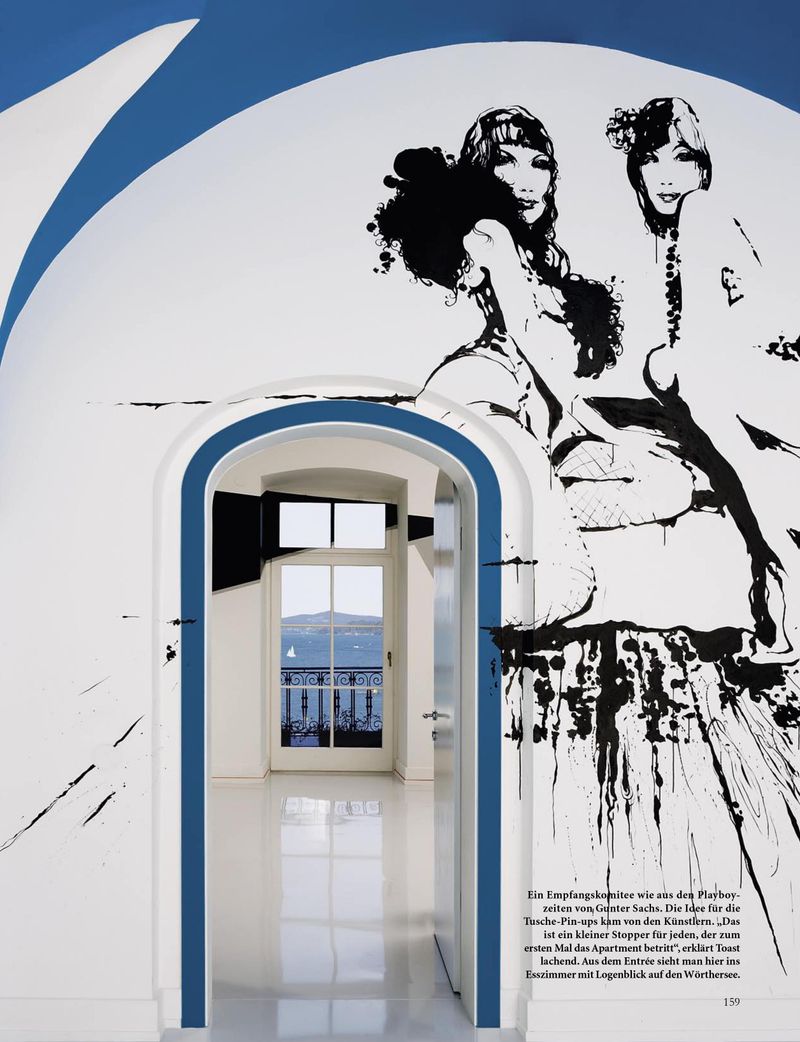

Ata Bozaci, Point of view (2007). Collaboration with Dare Sigi von Koeding. Privat apartment Gunter Sachs Schlosshotel am Wörthersee, Velden. Featured on Architectural Digest (AD). Photos: © Estate Gunter Sachs
A: When painting large surfaces, such as a multi-story house facade, efficiency becomes an important factor to implement/for implementation. A crane costs around 500 CHF to rent per day. This means working quickly if there’s any budget left to spare. The question then is how to efficiently create a large image without losing its expression and impact. I began an experiment for this purpose in Australia with my artist friend Joel Van Moore, known as “VANS,” who is renowned for his colourful graffiti lettering. The experiment focused on the visibility of letters from a distance of about 500 meters. We painted two styles side by side: a colourful one with hatching, patterns, and various gradients by Joel, and a lettering piece by me that employed flag principles. At around 50 meters distance, Our colourful image turned into a grey mess, while the other remained easily readable.
This realization led me to apply the same method to human anatomy. It was clear to me that I could divide images into larger areas as long as lines followed our body’s anatomy. I also had to consider and define light and shadow conditions within circles or straight lines. After numerous portraits, I noticed that all faces followed a certain pattern.
Here’s an example: These pupils are the starting point. When two circles of the pupils are connected by a larger circle, additional reference points for positions of other body parts emerge. This seems to work throughout the entire organism. I applied this recipe to various animals with the same result. In summary, key features of the faces are reduced to surfaces. From a distance, the portrait still appears photorealistic. Our brain seems to have developed a ability to assemble surfaces into a real image in the mind’s eye.
I realized that I could also display portraits very small without losing quality. So, I started asking friends if I could create a portrait of them with agreement for using it as their profile picture on Facebook. After first 20 portraits, I started receiving commission requests.
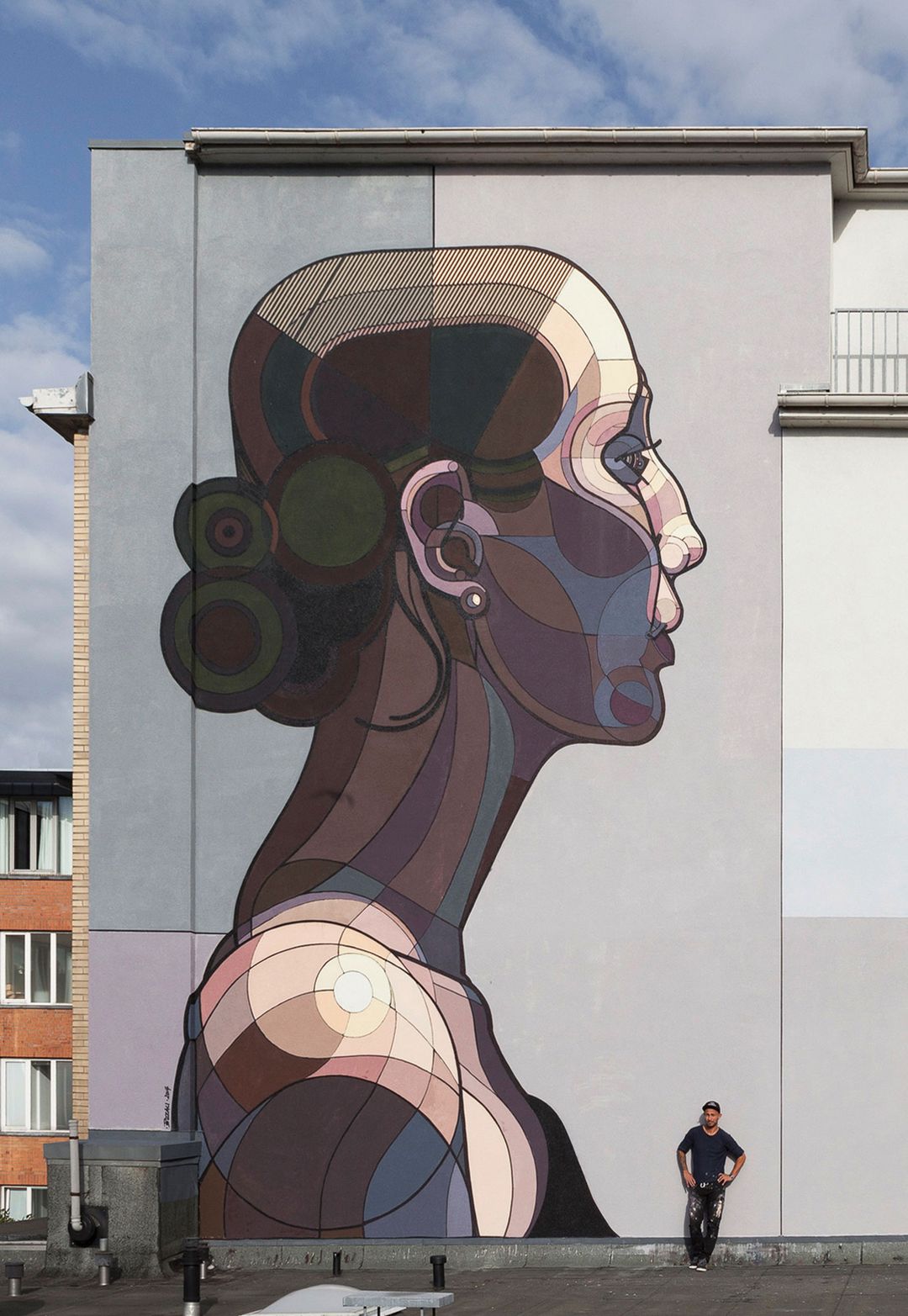
Ata Bozaci, Amanda – Beautiful Facebook (Hamburg), 2014.
Photo: © getting-up (STAMP Festival / altonale)
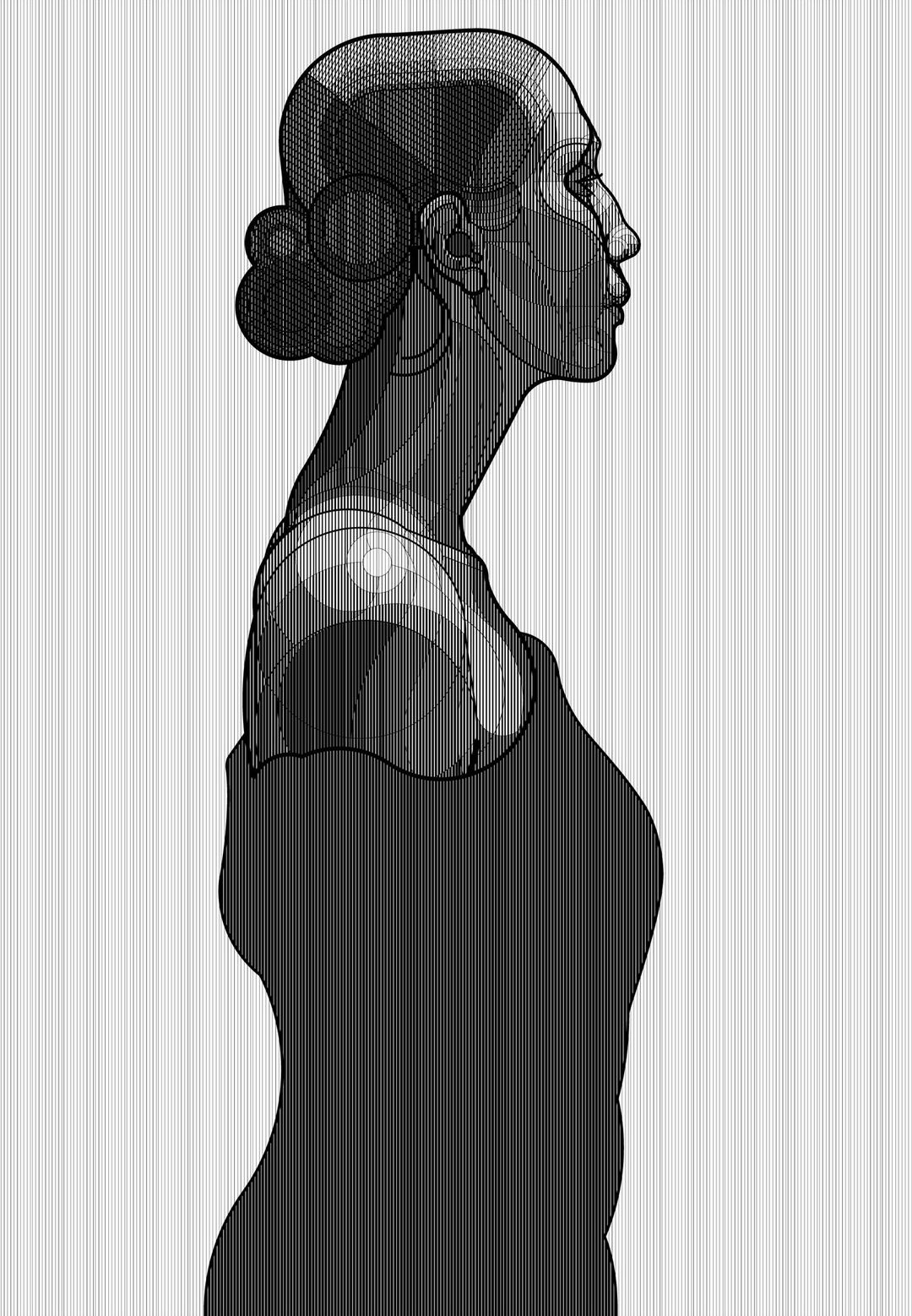
Ata Bozaci, Digitale Begegnung, 2015
Now ~ 200 portraits have been created. Many of these portraits can be found in our book “Fifteen seconds of fame”. In it, I present each portrait subject with a socially critical question, which is answered with a story or a quote.
D: Do you see any connection to the PFP NFTs that are used on Twitter? Such as the CryptoPunks – an avatar that looks somehow like them – similarly to your series
“Fifteen seconds of fame”.
A: No, if anything, that happened unintentionally. The PFP NFTs also came much later. My first portraits were already created in the year 2013.
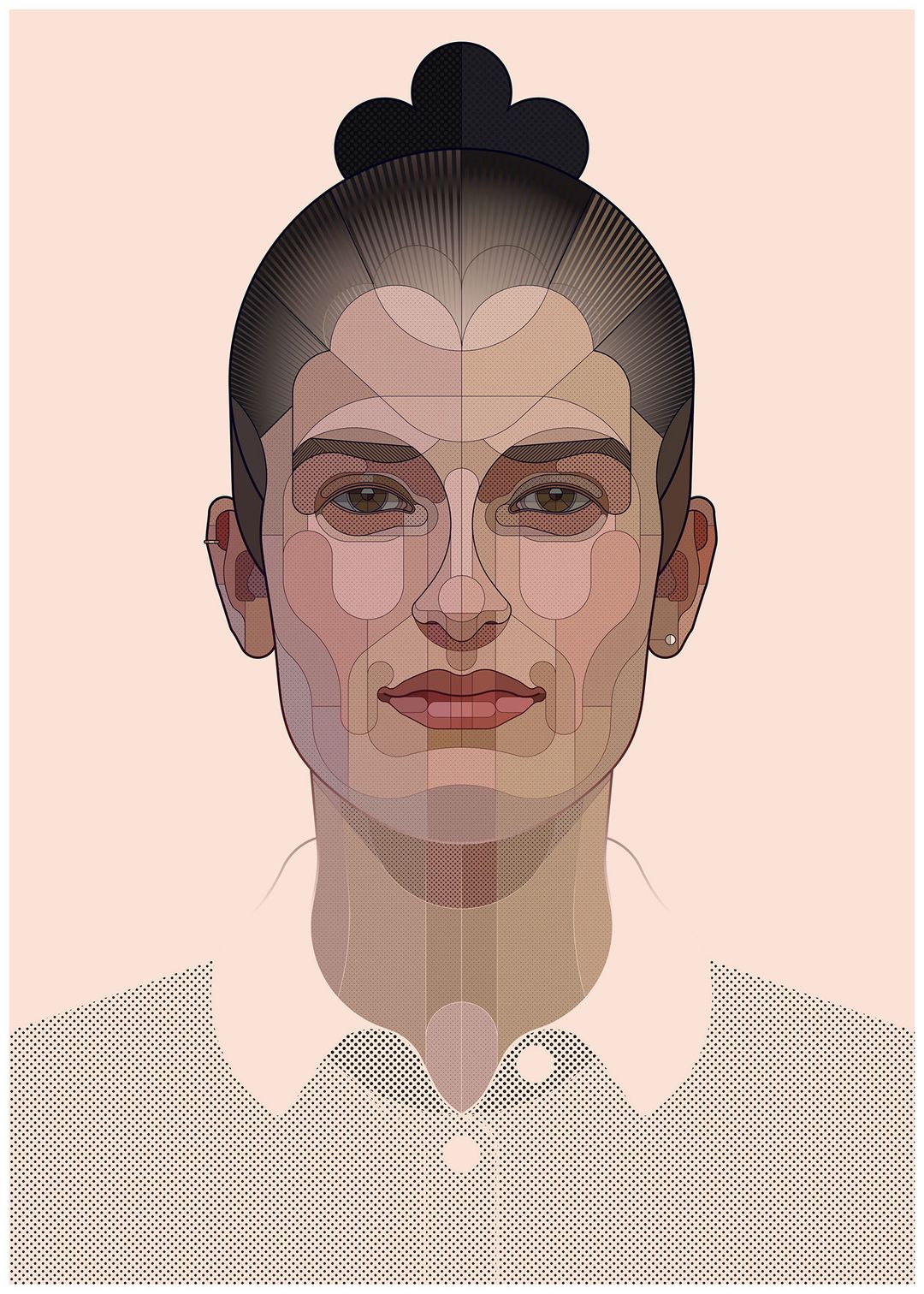
Ata Bozaci, Analisa, 2016
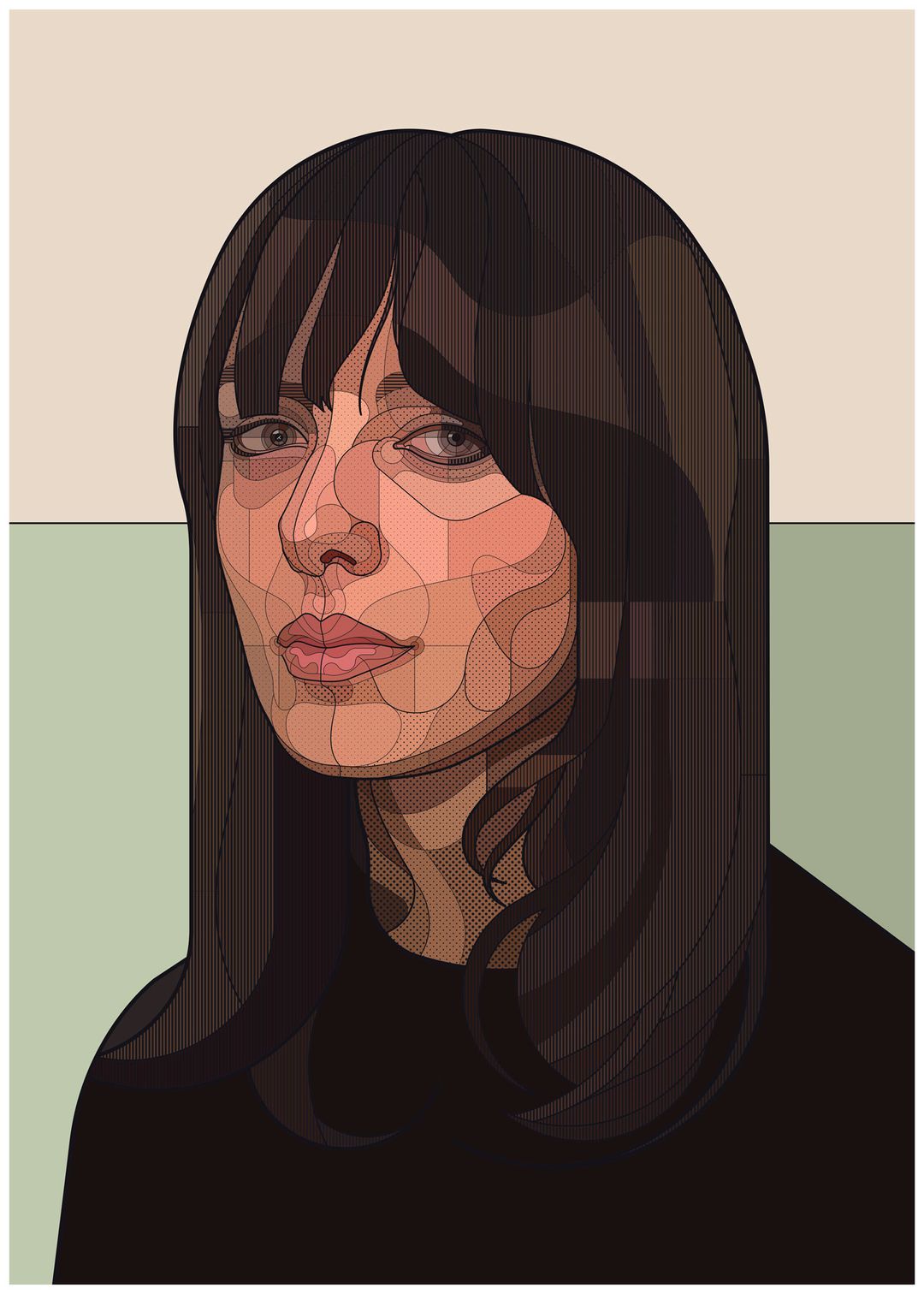
Ata Bozaci, Julia,2017


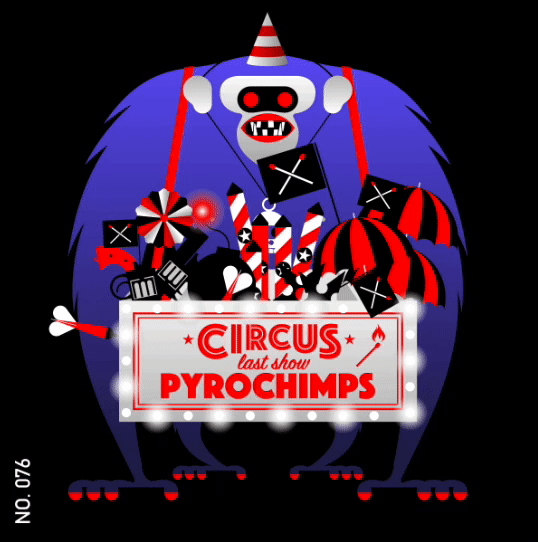
GIFs of Pyrochimps No 076, No 029, No 077
D: Could you tell us about your NFT release “Pyrochimps” – an art project that has been in work for more than a decade. How did that expand your art practice?
A: 2017, I was approached by a start-up funded by Swisscom (former dloop AG now rebranded as elementum.art), was asking me if I want to exhibit digitally created images. The images were already connected with blockchain technology at that time. The goal was to adorn the large black screens of television sets in living rooms with licensed art.
Some years later, Remy Burger, my former partner at „Atalier“, called me and said I needed to get into NFTs. While developing online games in the late nineties, we had started a side project called “PYROCHIMPS”. This served as our experimental platform in the realms of film, music, and entertainment. We decided to revive this project. After three weeks of intensive research, we developed a new concept and presented 100 different Pyrochimps as NFTs, each with its own backstory. It gained hype for a short period, as apparently our project was one of the few that Switzerland had to offer. Our primary goal was to familiarize ourselves with this technology and leverage its benefits for my art. The crypto currency market crashed, and the rest is (for now) history.
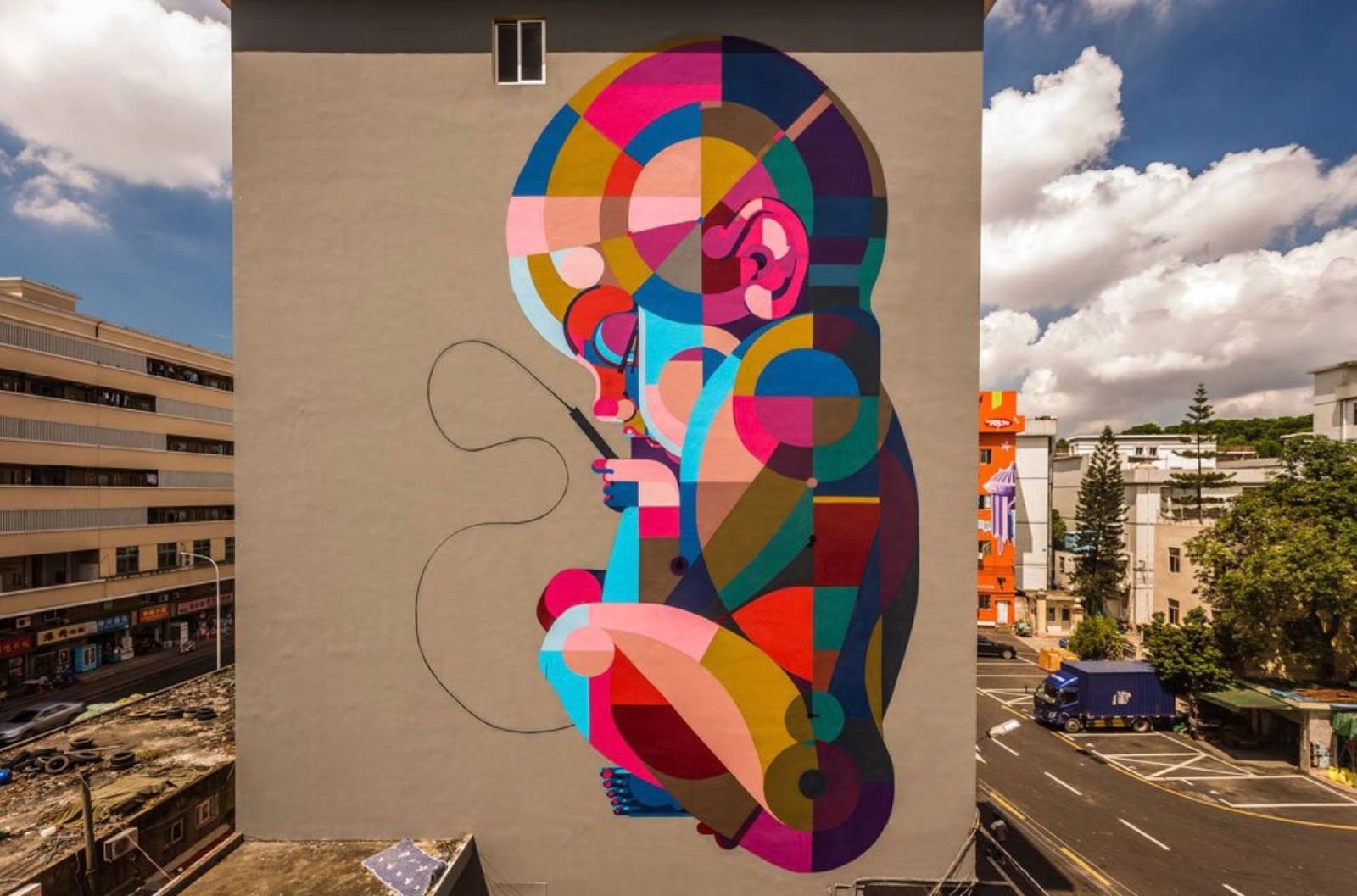
Ata Bozaci, Online baby
(Jardin Orange, Shenzhen), 2016
Photo: © Jesus Salazar
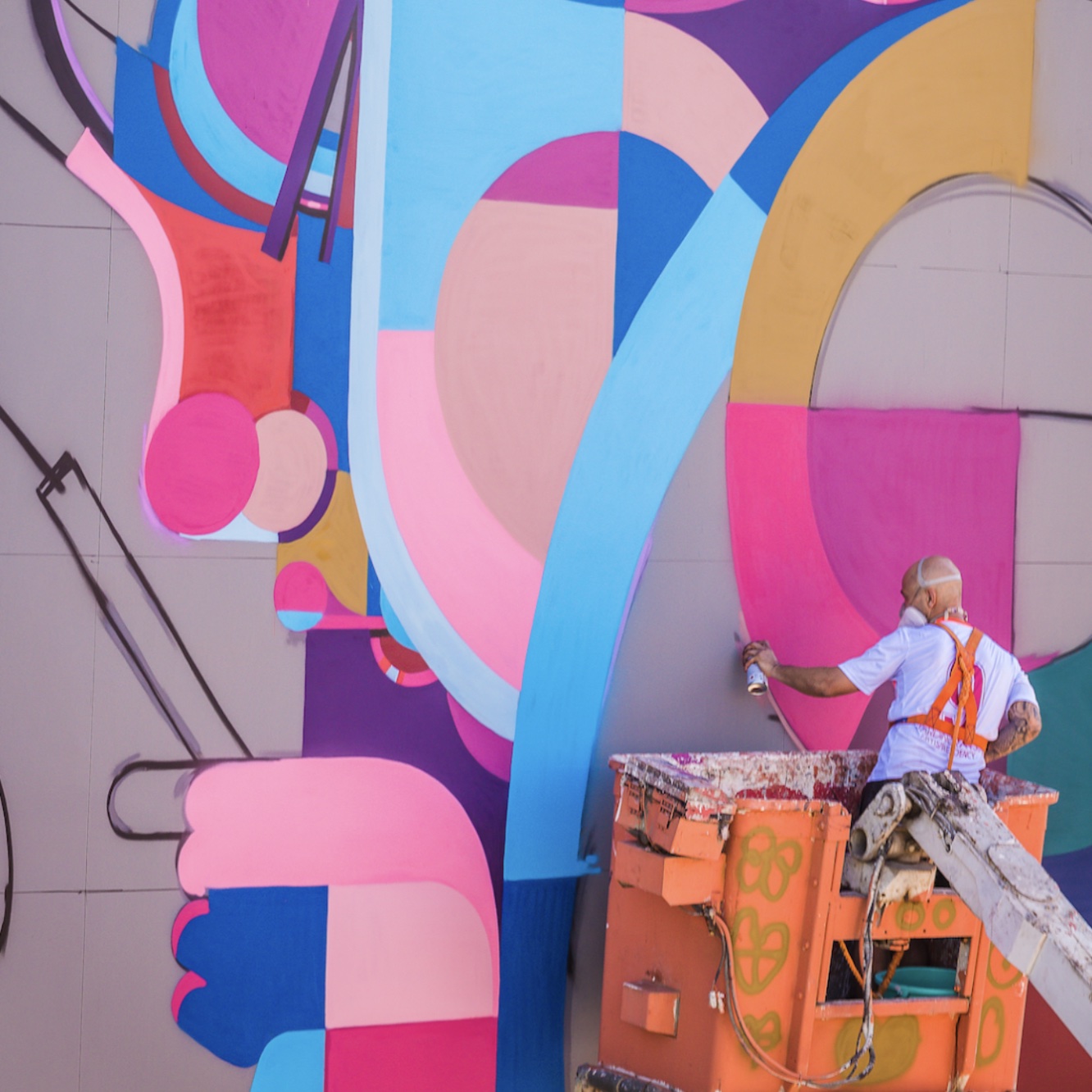
“Online baby” was created during the development of Ata Bozaci’s residency in Jardin Orange (Shenzhen) in 2016. Six years earlier, when he was traveling with his longtime friend Fouad (Ceet) Ben Allal to various cities in China to exhibit. Ceet stayed and organized different events including this residency and exhibition in Shenzhen. Various international artists were invited to transform the newly emerging settlement into an open air gallery. This colourful work is the main work of the series “Living in a box”.
D: Your largest mural in Shenzhen depicting a colourful baby attached to a smartphone is thought-provoking. Could you share the symbolism and intended impact behind this artwork in enhancing the neighborhood’s atmosphere?
A: In the year 2000, my longtime friend Fouad „CEET“ and I travelled to China. At that time, China was still very untouched when it came to graffiti. Fouad, who later lived in China for many years, was able to realize various projects with the Chinese authorities. One of these was the artist residency „Jardin Orange“ in Shenzhen. The goal was to bring together international and Chinese artists who collaborated to shape the new cityscape of Shenzhen. The mentioned artwork „Online baby“ is a motif from the series „Living in a Box“. Technology and smartphones are much more advanced in China than we Europeans are aware of. This once provocative image seems to have become commonplace today.
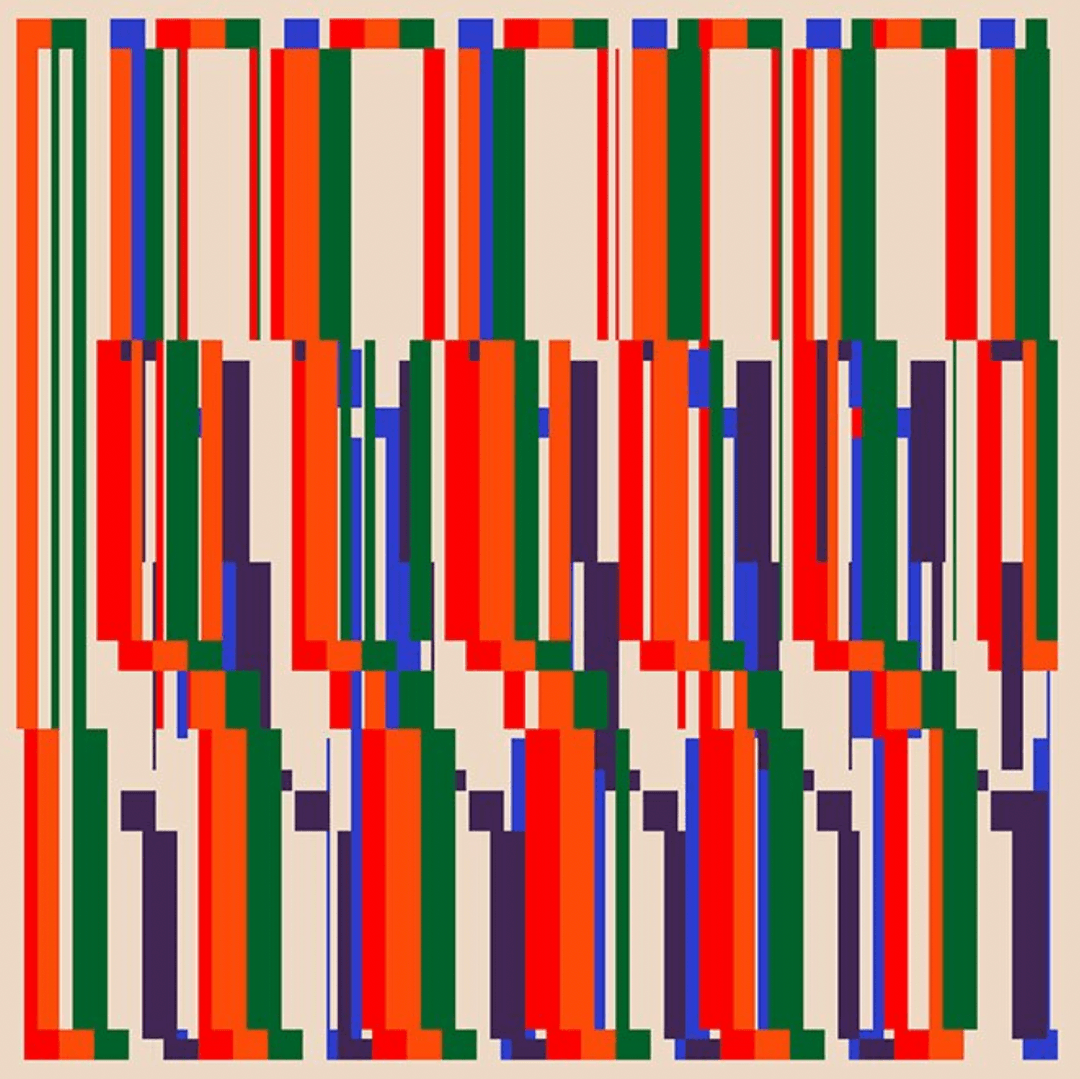
Ata Bozaci,USA Rhythm of the desert 01, 2022
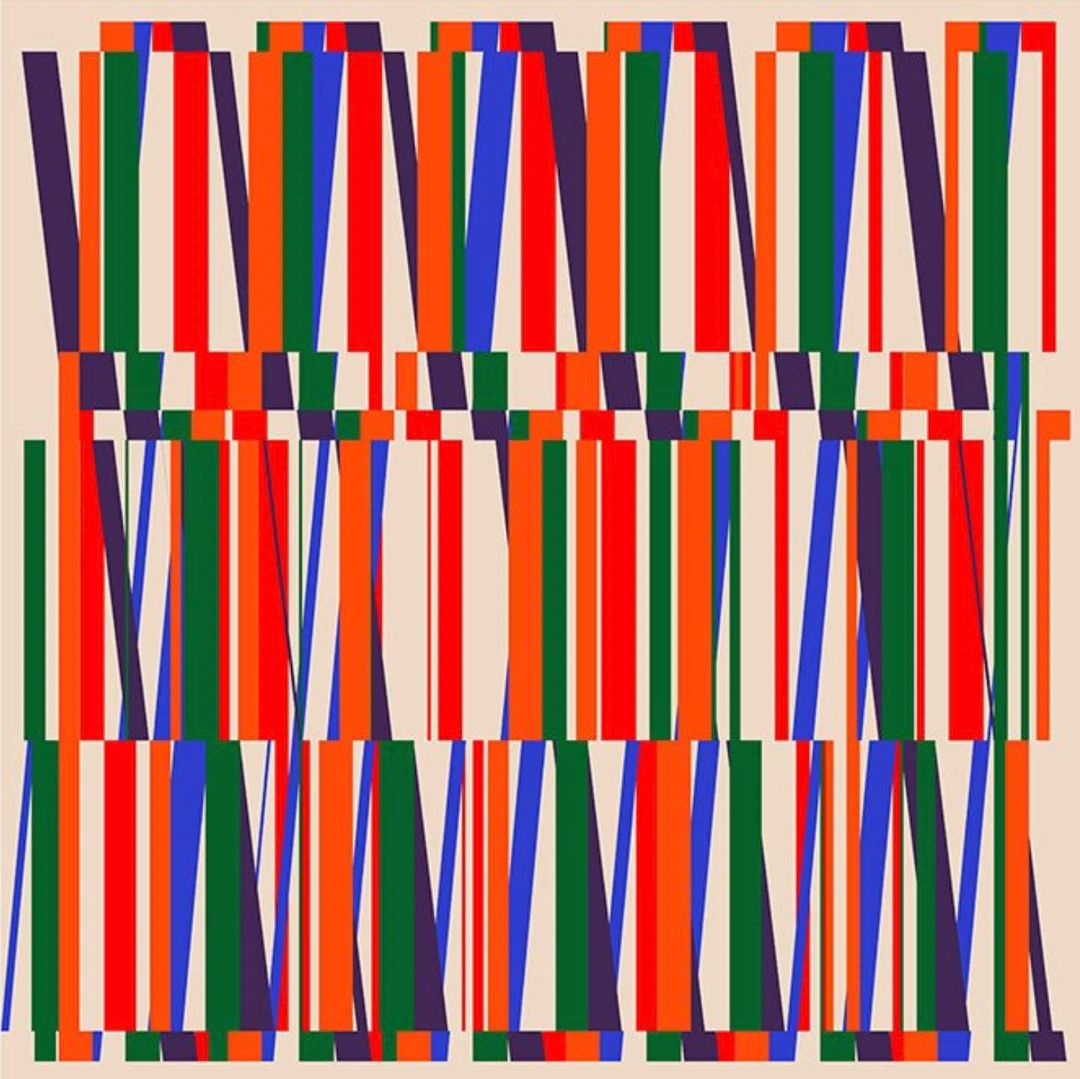
Ata Bozaci, USA Rhythm of the desert 05, 2022
A: Currently, I am working on my abstract works on the theme “Unexpected Interruption.” The last two exhibitions, accompanied by my latest book, address our vulnerability of complex and entrenched structures in every aspect. My father taught me from an early age that there is no certainty in life. As a foreigner, back when I still had „the C-permit“, I would have to be the first to leave Switzerland in times of unrest or war. This had a profound impact on me, as I considered Switzerland my home and still do. Especially since I could hardly imagine such a thing in the idyllic world where I was born and raised. However, his point became clear when he gave an example: Switzerland is like a highly functional watch, where many small gears interlock. But it takes only a small grain of sand in the mechanism to bring everything to a halt and plunge it into chaos.
When I was travelling from New York to San Diego on September 11th and the planes crashed into the World Trade Center at the same time, I was in my hotel room. And the example immediately came to mind. Events like this one moved me to explore this theme in my works. The catalyst was a skateboarding accident. It took only a small pebble to bring down even an experienced skateboarder like me. There’s even a term for it – “Chalky.” Chalkies pose an immediate threat as they suddenly stop the movement of the wheels and can throw a skater off balance. Typically, they leave behind a line resembling a chalk mark, indicating the spot where you were thrown off the board.
These current works bring together many of my diverse interests such as music, rhythm, sports, movement, discipline, repetition, image, graffiti, technology, execution, film, and animation.

